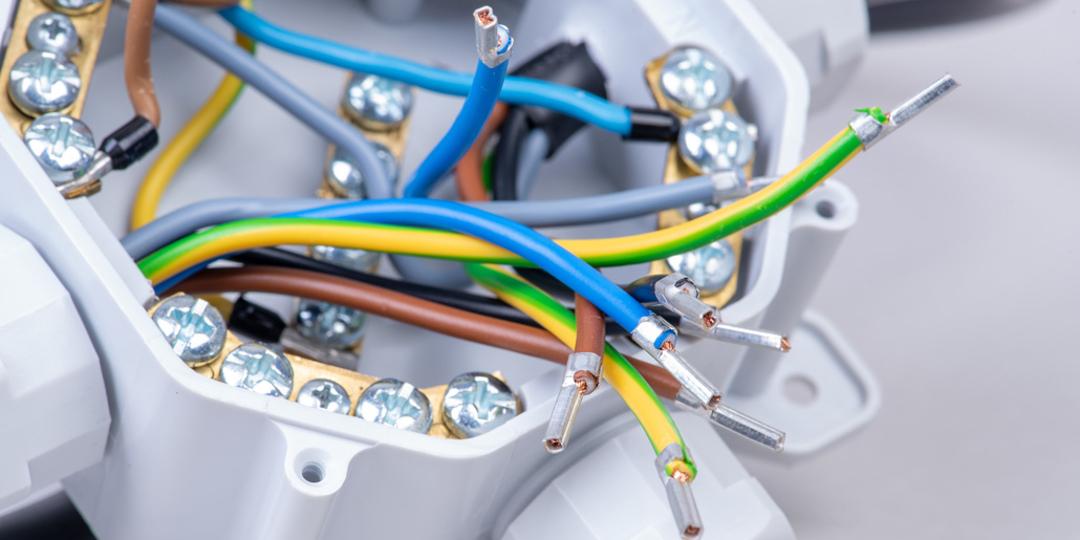Line vs Load Wire: What You Need To Know

October 26, 2022
Many homeowners pride themselves on their ability to save money by installing new light fixtures and switches. Other common DIY electrical work includes replacing outlets or upgrading to a GFCI (Ground Fault Circuit Interrupter) outlet. Understanding how your electrical system works is critical to safety. To make these repairs, you’ll need to understand the line vs. load wire.
Line vs Load Wire Definition
Put simply, “line” refers to the wires that feed electricity, and “load” refers to the wires that move it along. A line wire carries power from the source to a device or an appliance. The load wire moves that power to the next device on the chain.
The line is the incoming electricity and the load is the outgoing electricity.
How Line vs Load Translates to DIY Repairs
If you’re working on hard-wired electrical components, it’s critical to be able to identify them to handle them safely and properly.
For example, if you’re replacing a ceiling-mounted light fixture, you’ll need to know how the line and load wires are connected to it and to the switch on the wall that operates it.
The line wire is the input to the light switch. At the light switch is the load wire that carries that power from your electrical panel through the wall and ceiling to the fixture.
What is a line wire?
The first line wire in your home runs from your utility company’s lines to your electrical distribution panel.
The next line wires in the system are those that run from the breakers to the designated electrical boxes in your home. Usually, they’re behind the walls, but may be surface mounted in unfinished spaces like attics and garages.
Line wires are always “hot,” which means they are carrying an electrical current.
Consider them the “supply lines” of electrical power.
What is a load wire
The load wire is a bit broader in definition, but in short, it’s the wire that continues to carry the electricity from some terminal point to the point of use.
In light switches, for example, the line wire carries the power to the switch, and the load line carries the power from the switch to the light. When the switch is cut off, the power is cut to the light.
If you have a series of outlets wired in sequence, the load wire is the wire that feeds electricity from the first outlet to the remaining boxes on the same line.
How Do I Tell the Line vs Load Wire
If you’re replacing fixtures or switches in your home, you’ll need to be able to tell one from the other.
There are several ways to determine which is which:
Wire position
If you inspect your electrical distribution panel, you’ll see the incoming feed from the power company is connected to the bottom of the panel. The outgoing lines are connected to the top of the panel.
This is the standard position for line vs load wires, and you’ll see this positioning reflected in other electrical devices in your home.
Some devices might also be marked with lettering that spell out “line,” “power,” etc. In some cases, the line wire is connected to the device with silver colored screw so it stands out from others.
Wire color
Electrical wires are coated with color-coded insulation to protect from shock and indicate the wire’s purpose. Unfortunately, this color-coding system isn’t standardized, and the color system can be confusing.
White: Neutral
Gray: Neutral
Green w/ yellow stripes: Ground wire
Green and/or bare copper: Ground wire
Black: Line wire from upstream (live)
Red or black: Load wire going downstream
The fact that black is used for both line and load can be daunting. Line wires are generally black, and the load wires are generally red, black, or sometimes blue.
Test the wires
A volt pen will help you determine which wires are “hot.” Most will produce a red light when the wire is live, which is the line wire. Consult your model’s instructions for specific details on its use.
When Line vs Load Matters
With simple on-off light switches, mixing up the line and load wires won’t affect the operation. The power will be either off or on.
It does become critical is when installing a GFCI outlet. Because it contains an internal circuit breaker, incorrect installation can cause a safety failure. A short will cut the power upstream, but it won’t cut power on the downstream load wire. So, it won’t be able to prevent accidental electrocution.
Many homeowners can replace outlets and light switches, but it’s important to get it right. For more complicated projects, make an appointment today with the team at Mr. Sparky in Pleasantville. We’re standing by to handle all of your electrical wiring needs, safely and professionally.